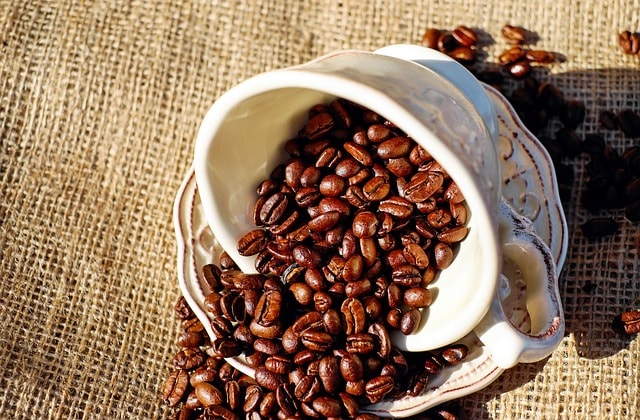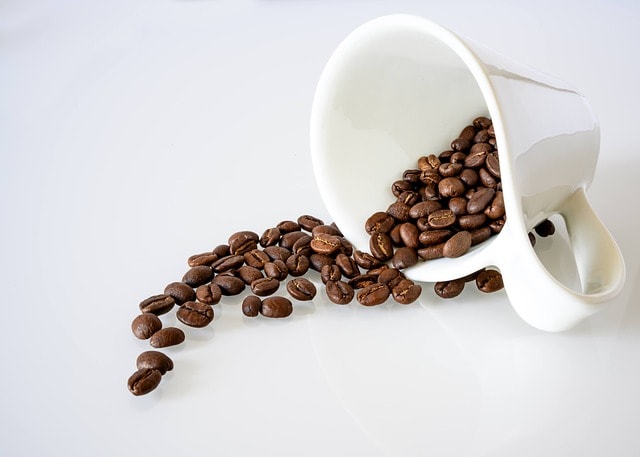Coffee is a cherished daily ritual for millions of people worldwide. But what if the very beverage that jumpstarts your day contains hidden health risks?
Recent conversations in the wellness space have brought mold, mycotoxins in coffee, and "clean coffee" into the spotlight, raising concerns among coffee lovers. This post dives into what "mold-free coffee" really means, why it matters, and how to choose the cleanest cup for your health.

What Is Mold-Free Coffee?
Mold-free coffee refers to coffee that is tested and processed to reduce or eliminate mold spores and their toxic byproducts, known as mycotoxins. Mold can grow on coffee beans during various stages of production, particularly if they're improperly harvested, stored, or transported in humid conditions. One of the reasons our roast house is closely monitored for temperature and humidity!
Mold-free coffee is also often associated with certifications such as USDA Organic, which not only supports health-conscious choices but also aligns with environmentally sustainable practices. Organic certification helps make sure that coffee is grown without synthetic pesticides and harmful chemicals, reducing the chances of mold growth during production.
Whether it's instant coffee, fair trade coffee, flavored coffee, or anything in between, all that coffee CAN harbor mold.
Why Should You Care About Mold in Coffee?
While most commercially sold coffee is generally safe for consumption and widely considered healthy coffee, mold and mycotoxins can pose risks to certain individuals, especially those with:
Mold sensitivities or allergies
Mold spores can make symptoms worse like headaches, fatigue, or respiratory issues.
Chronic health conditions
Exposure to mycotoxins may contribute to long-term health concerns, including immune suppression and inflammation.
Desire for peak performance
Some health and wellness enthusiasts advocate for mold-free coffee to optimize mental clarity and energy levels.
Health-conscious consumers often prefer mold-free coffee brands that prioritize shade-grown techniques or other biodynamic coffee approaches that improve soil’s natural fertility. Shade-grown coffee not only produces high-quality beans but also supports biodiversity and soil health, helping to improve soil's natural fertility, making it a win-win for drinkers and the environment.

How Does Mold Get into Coffee Beans?
Mold typically develops in coffee beans during:
-
Harvesting: Improper drying of beans can create moisture conditions ideal for mold growth.
-
Storage: Inadequate storage in humid environments fosters mold growth. Humidity is carefully regulated in our facility to store the green beans properly as they await roasting.
-
Transportation: Long transit times in unregulated conditions can expose beans to moisture.
-
Choosing coffee stored in airtight containers with degassing valves minimizes the risk of exposure during transportation and ensures freshness.
Coffee Bean Quality and Sourcing
When it comes to coffee bean quality and sourcing, it’s essential to look for brands that prioritize sustainability, fair trade, and regenerative organic farming practices. This ensures that the coffee beans are not only of high quality but also grown in a way that promotes environmental stewardship and social responsibility.
Some key factors to consider when evaluating coffee bean quality and sourcing include:
-
Single-Origin vs. Blended Beans: Single-origin beans offer a more distinct flavor profile and can be a better choice for those who value transparency and sustainability. These beans are often grown in specific regions known for their unique coffee characteristics, providing a richer and more authentic taste experience.
-
Shade-Grown vs. Sun-Grown Beans: Shade-grown beans are cultivated under a canopy of trees, which helps to preserve biodiversity and promote healthy soil. This method not only produces superior coffee beans but also supports the ecosystem by providing habitats for wildlife and reducing the need for chemical fertilizers.
-
Organic vs. Conventional Beans: Organic beans are grown without the use of synthetic pesticides, herbicides, or fertilizers, making them a better choice for those who prioritize environmental sustainability. Organic farming practices help maintain soil health and reduce the risk of mold contamination during the growing process.
-
Fair Trade Certification: Fair trade certification ensures that coffee farmers are paid a fair price for their beans and that they have access to safe working conditions and fair labor practices. By choosing fair trade coffee, you support ethical practices and contribute to the well-being of coffee-growing communities.
By considering these factors, you can make informed choices that align with your values and enjoy a cup of coffee that is both delicious and responsibly sourced.
How to Choose Mycotoxin Free Coffee Brands
Here's what to look for when selecting mold-free coffee:
Certifications
Choose coffee brands that test for mold and mycotoxins. Look for certifications such as Organic or third-party lab testing for transparency. All of our organic coffee and specialty coffee is sourced from brokers who are organic certified, along with our facility being certified organic.
Of course, the farms in which the beans are grown are also part of the organic chain, creating an organic experience start to finish for the beans–and a smooth coffee that's reliable every time.
Single-Origin Coffee
Single-origin coffee is often grown and processed with greater care compared to mass-produced blends, reducing the likelihood of mold contamination. Often from sustainable coffee cooperatives and even Rainforest Alliance certified farms, all of our coffee is small batch roasted. Even our blends are small batch roasted using carefully grown single-origin beans as mentioned above to create the blends.
Airtight Packaging
Choose beans stored in airtight, moisture-resistant packaging to ensure freshness and prevent contamination. This also includes maintaining the proper humidity in the roast house and protecting green beans from moisture while they await roasting. The degassing valves on coffee bags are one-way valves which allow air to escape, but not to enter the coffee bag.
Consider looking for specialty grade coffee or those labeled as "mycotoxin free coffee brands," as these often undergo rigorous quality checks during processing.
The Benefits of Mold-Free Coffee
-
Enhanced Flavor: Mold-free beans often taste fresher and cleaner.
-
Improved Health: Reducing exposure to mycotoxins supports overall wellness.
-
Consistent Energy: Many report avoiding the "crash" or jitters associated with lower-quality coffee. Lower quality coffees may have more inconsistent caffeine content and more impurities due to lower quality roasting and sourcing. This may also result in a bad tasting coffee, prompting the consumer to add more sugar and creamer to compensate for the taste, which also contributes to the jitters and crash.
-
Peace of Mind: Knowing your coffee is carefully tested can make your morning cup even more enjoyable.
-
Environmental Impact: Mold-free coffee often aligns with regenerative organic farming practices, which enhance soil health and reduce reliance on chemical fertilizers.
DIY Tips to Minimize Mold Exposure
- Buy Whole Beans: Buy whole bean bags and grind your beans fresh to avoid pre-ground coffee, which may be more susceptible to mold contamination. This is due to the increased surface area, allowing greater exposure to oxygen.
- Store Properly: Use airtight containers and keep coffee in a cool, dry place. Learn more about proper bean storage here.
- Drink Fresh: Buy coffee (and buy coffee online!) in smaller batches to help make sure you are consuming it while fresh. That goes for decaf coffee, medium roast, and dark roast alike!
- Buy Green Coffee Beans: Roasting your own or buying green and fresh coffee is a fun way to go all the way to the source before you drink coffee at home.
When brewing, methods like French press or cold brew can preserve the natural flavors of mold-free coffee, ensuring a cleaner taste with every sip.
Brewing and Storage Tips
To get the most out of your mold-free coffee, it’s essential to brew and store it properly. Here are some tips to keep in mind:
-
Use Filtered Water: Using filtered water can help to reduce the risk of contamination and improve the flavor of your coffee. Tap water may contain impurities that can affect the taste and quality of your brew.
-
Store Coffee Beans in an Airtight Container: Storing coffee beans in an airtight container can help to preserve freshness and prevent mold growth. Keep the container in a cool, dry place away from direct sunlight to maintain the beans’ quality.
-
Grind Coffee Beans Just Before Brewing: Grinding coffee beans just before brewing can help to preserve flavor and aroma. Pre-ground coffee is more susceptible to oxidation and mold contamination, so it’s best to grind your beans fresh for each cup.
-
Use a Clean Coffee Maker: Using a clean coffee maker can help to prevent the growth of mold and bacteria. Regularly clean your coffee maker according to the manufacturer’s instructions to ensure a safe and delicious brew.
By following these brewing and storage tips, you can enjoy the full flavor and benefits of your mold-free coffee.
Final Takeaways On Healthy Roasted Coffee
Mold-free coffee is more than just a trend—it's a commitment to health, quality, and a better coffee experience. By choosing reputable brands and staying informed, you can enjoy your coffee without compromise. Whether you are an avid coffee enthusiast or simply looking to upgrade your daily brew, mold-free options are worth exploring for a cleaner, more energizing start to your day.
Adding mold-free coffee to your routine not only supports personal wellness but also contributes to a more sustainable and environmentally friendly coffee culture.
From enhanced flavor to health benefits, every sip is a step toward a brighter, mold-free morning.
Click here to see Philly Fair Trade's lineup of organic and fair trade coffees.
Common Questions About Mold-Free Coffee
Here are some common questions about mold-free coffee:
-
What is Mold-Free Coffee? Mold-free coffee is coffee that has been tested and certified to be free of mold and mycotoxins. This ensures a safer and healthier coffee experience.
-
How Do I Know if My Coffee is Mold-Free? Look for certifications such as USDA Organic or Fair Trade, and check the packaging for statements about mold-free testing. Reputable brands will often provide information about their testing processes and certifications.
-
Can I Still Get Sick from Mold-Free Coffee? While mold-free coffee is a safer choice, it’s still possible to experience adverse effects from coffee consumption, especially if you’re sensitive to caffeine or other compounds. Always listen to your body and choose coffee that aligns with your health needs.
-
Is Mold-Free Coffee More Expensive? Mold-free coffee can be more expensive than conventional coffee, but the benefits to your health and the environment make it a worthwhile investment. The higher cost often reflects the rigorous testing and sustainable practices involved in producing mold-free coffee?
